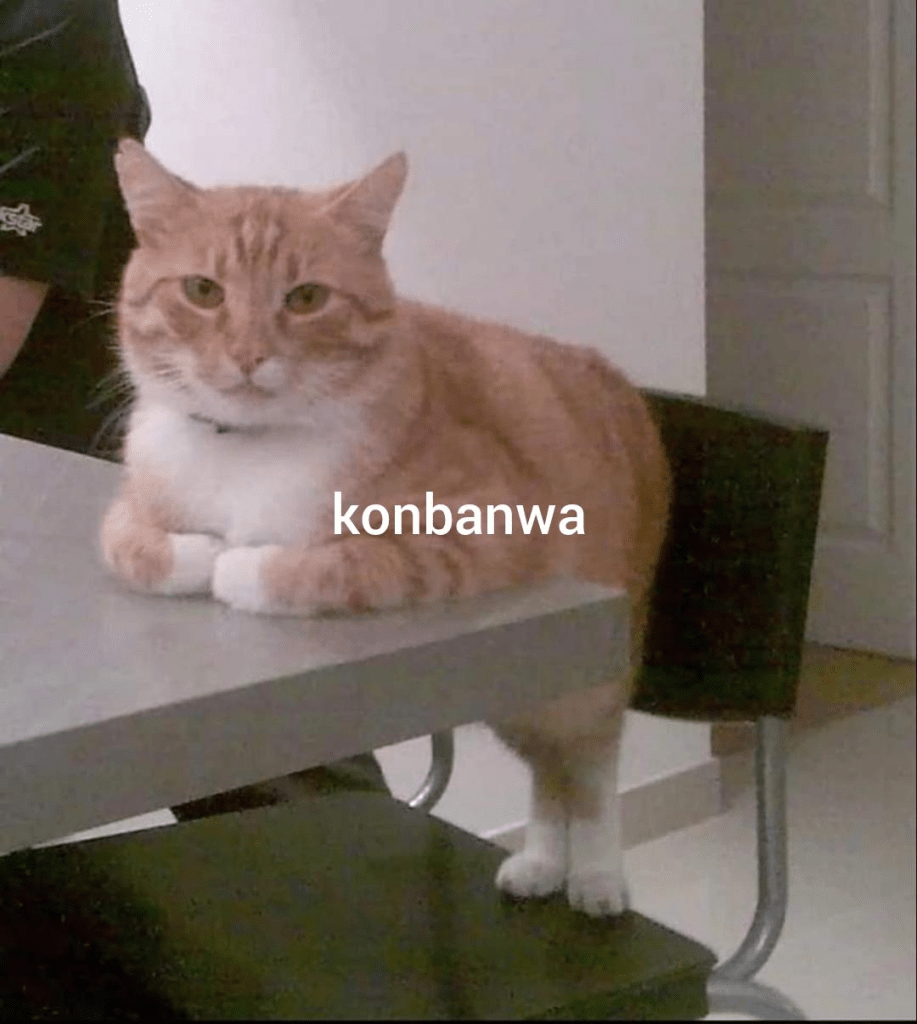After 1 month Hackathon with Learning Japanese, I can confirm it is harder than learning English.
おはようございます> Ohayou gozaimasu. > Good morning > Chào buổi sáng

The problem with me to learning this prompt and I’m still confuse is :
- Nothing pronoun relate to my mother language 🤮
- What the hell tenten mean ?
- Vietnamese reader will be like : Ô ha zô gô zai mạc 😂 > sound like handsome guy
- You can just use おはよう(Ohayou ) for normal conversation, is it ?
2. こんにちは。 (Konnichiwa.) – Good Morning – Xin chào.
First time I’m understand In こんにちは, the last character is は (ha), not わ (wa)
Even though it’s written as は (ha), in this context it’s pronounced “wa”, because は is used as a particle in Japanese grammar and is pronounced “wa” when used that way.. So why ? Long, long, very long ago. Like 1000 years ago 😱. Japanese pronunciation was different from what it is now.
Also have some word same with は is え or を

3. こんばんは。 (Konbanwa.) – Good evening – Chào buổi tối.

This is second prompt I know when I start with Doulingo application. Sound like simple but easy to forget after 2 days. And then you must know two thing after know the prompt :
- tenten は(ha) > ば(ba)
- は pronounced is wa not ha following same with こんにちは
4. ありがとうございます。 (Arigatou gozaimasu.) – Thank you – Cảm ơn.
Sound good ? Actually no, first what I feeling is :
- How should “り” be pronounced? In Vietnamese, we pronounce it as “Rờ i ri,” but it sounds like “di” or “li.” I’m not sure which is correct. Is it possible that the pronunciation differs depending on the region, like between Tokyo and Osaka?
- Regarding the “tenten” ( ゛ ) pronunciation:
- か (ka) → が (ga)
- さ (sa) → ざ (za)
- こ (ko) → ご (go)
5. すみません。 (Sumimasen.) – Sorry – Xin lỗi / Xin phép / Gọi ai đó.

すみません can use in many case from what I see:
- To get someone’s attention
- To apologize
- To show gratitude or politeness
- When asking for help or a favor
- On the phone or entering a room
- …
Wow, this really is powerful prompt 😆
6.いくらですか? (Ikura desu ka?) – Cái này giá bao nhiêu?

I’m a bit trouble with this, it make me burn a lot of money when I come to Japan 🥲. This is red flag for someone want to lean.
Everytime I ask いくらですか? 70% I will expend money.So it useful in case you go to the market or some place store on the street.
8. これは何ですか? (Kore wa nan desu ka?) – What is this ? – Đây là cái gì?

I love this prompt, because I don’t know many about food or something when I come to Japan. I just need point my hand into that and just say :すみません、こらわなんですか?
After that, they reply to me, but I can’t understand what they’re saying because I just started learning Japanese 😶🌫️. All I can do is nod and keep saying ‘はい, はい, はい’.”

9. ください -Please – Làm ơn

This prompt can use for many time when you visit Japan:
Example you want to drink water :
- Mizu Kudasai > みず > 水 > Water Please > Vui lòng cho tôi nước.
Just 1 word but if you want to use it, you must know some grammar to make a connect with N + ください
I think the good way to learn kudasai is :
- Learning Grammar with Hiragana
- Learning Kudasai > ください
- Make connect with …
- Learning more word
- Learning Kanji and make a loop
- ….
10.大丈夫です。 (Daijoubu desu.) – I’m fine – Không sao đâu / Tôi ổn.
When you well you can use, and when you unwell you can use as well 😂
